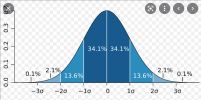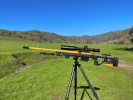Professor Doolittle
Well-Known Member
It just occurred to me that the practice of taking a single shot to test the zero doesn't make any sense if you care about accuracy.
the way I was taught:
If you only care about a rough zero I guess that's fine but in my case I was trying to adjust Hornady's 4DOF axial form factor, but that feature is to address a difference of like a quarter inch in a 600 yard shot. If the zero is not perfect than axial form factor is just compensating for poor zero.
the way I was taught:
- shoot a group at 100 yards
- find the center of the group
- zero the scope to this data
- take a single shot to test the zero near bullseye
If you only care about a rough zero I guess that's fine but in my case I was trying to adjust Hornady's 4DOF axial form factor, but that feature is to address a difference of like a quarter inch in a 600 yard shot. If the zero is not perfect than axial form factor is just compensating for poor zero.
Last edited:


